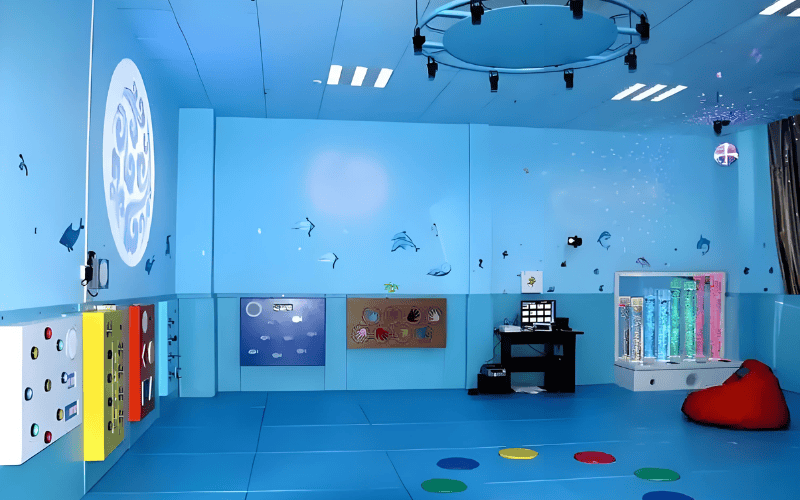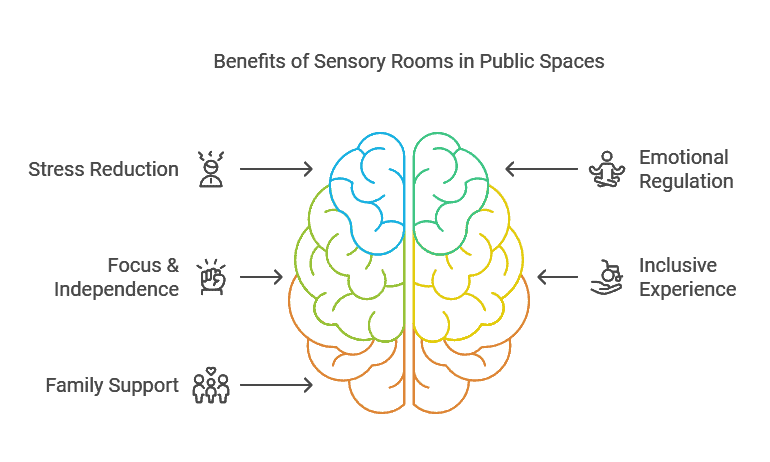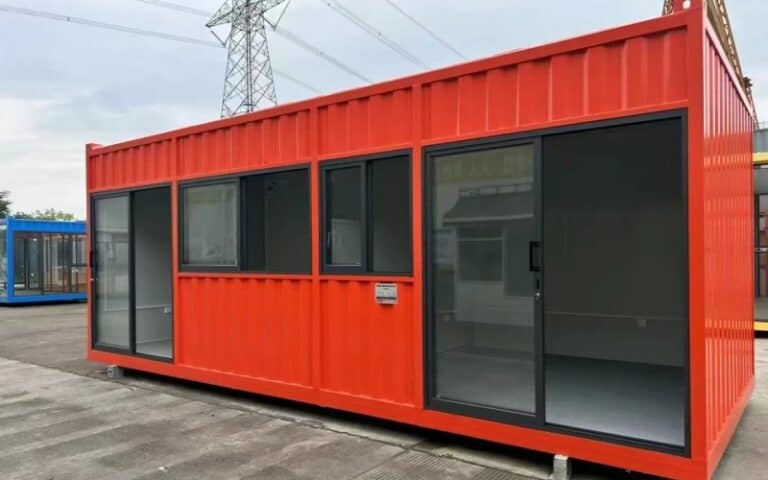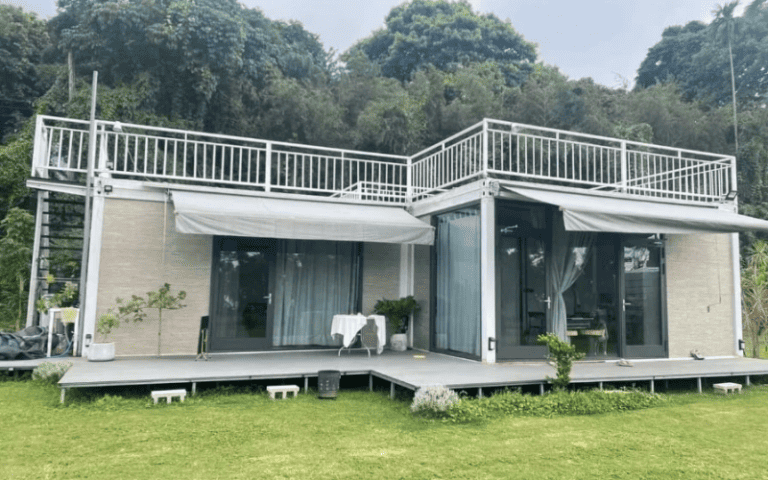Many children, particularly those with autism, experience sensory challenges that affect both their learning and emotional well-being. With the right environment, however, these challenges can be managed effectively. Portable sensory rooms are designed to provide a calming, adaptable space that supports children with sensory processing issues.
In this article, we’ll explore how portable sensory rooms offer benefits such as flexibility, customization, cost-effectiveness, and adaptability to diverse needs—making them a great solution for schools.

1. Convenience & Flexibility
Streamlined installation, quick relocation, and flexible space usage make the portable sensory room a practical solution for schools.
Easy Mobility & Adaptability
The portable sensory room can easily be moved between spaces, allowing schools to make the most of available resources by changing its location as needed. With our modular construction expertise, we can ensure that these rooms are designed to be easily relocated without the need for extensive modification to the building.
Quick Setup & Tear-Down
Pre-fabricated modules make assembly quick and hassle-free, so schools can have the room ready in time for new terms. Thanks to our efficient manufacturing process, schools can expect a fast turnaround from delivery to installation. It’s just as easy to disassemble and relocate when necessary, without disrupting regular activities.
Flexible Space Utilization
The room fits easily into underused classrooms, hallways, or activity areas, saving space without requiring permanent changes. Based on our experience, we recommend leaving ample surrounding space to ensure smooth mobility and maximum flexibility. The modular design allows the room’s size and layout to be adjusted to suit different environments.
2. Customization & Scalability
Modular design offers endless customization and easy expansion, making it adaptable to any school’s needs.
Flexible Design
The modular sensory room can be customized to fit the school’s space, budget, and specific needs. Whether adjusting the size, color, or layout, we offer a range of options. For materials, we use sound-absorbing insulation like mineral wool or acoustic foam within the wall panels to improve soundproofing and create a calmer, more focused environment. This helps create a quieter, more calming environment, especially important for students with sensory sensitivities.
Gradual Expansion
The modular design allows for easy expansion or reduction of the sensory room as the school’s needs evolve, without requiring major renovations or additional construction. This ensures schools can adapt the space efficiently over time.
Tailored Equipment & Layout
Schools can choose sensory tools and equipment based on their students’ needs, from calming devices for autism to auditory aids for sensory impairments. The room can be divided into customized zones such as tactile, visual, or relaxation areas. For instance, we recommend placing tactile zones in areas with less foot traffic to create a peaceful, distraction-free space. Our experts are available to provide layout recommendations to maximize the room’s effectiveness and versatility.
3. Cost-Effectiveness
Modular design cuts construction and maintenance costs, making it a budget-friendly solution for schools.
Lower Construction Costs
Portable and modular sensory rooms are typically more cost-effective than traditional fixed structures. Our pre-fabricated modules are produced in factories, reducing costs through mass production and bulk purchasing of materials. Compared to on-site construction, this can lower costs by up to 30%.
Reduced Site Modification Costs
Unlike fixed sensory rooms that may require significant building alterations, such as structural reinforcements or layout changes, our modular rooms can be placed in existing spaces without the need for major renovations. This eliminates expensive site modifications, saving schools both time and money, while preserving the integrity of the existing structure.
Easy Maintenance & Upgrades
The modular structure ensures maintenance is simple and cost-effective. If a module requires repair or replacement, only the affected section needs attention—avoiding large-scale rebuilds. This design flexibility keeps long-term maintenance costs low and extends the life of the room.
4. Adapting to Diverse Needs
Modular design makes the sensory room highly adaptable to diverse needs, enhancing learning and well-being for all students.
Personalized Adjustments
The modular structure allows easy configuration to support various learning and therapeutic needs. Schools can customize zones—like tactile or visual areas—to suit children with autism, ADHD, or sensory challenges, all without needing extensive renovations or custom builds.
Versatile Use
The modular design’s flexibility enables the room to serve various functions. It can be quickly adapted for individual therapy, group activities, or relaxation. This versatility ensures that the room can evolve with the changing needs of the school or specific students, making it suitable for both educational and therapeutic environments.
Inclusive for All
The sensory room doesn’t only benefit students with specific needs; it also serves the broader student body. It’s a great space for stress relief, focus-building, and fostering creativity. With modular flexibility, the room can easily be reconfigured to provide a calming space for everyone, ensuring inclusivity and support for various student activities.
Related Reading: Modular and Portable Classrooms: Solutions for Education, Business, the Environment, and Society
Our Modular Buildings Provide Sensory-Friendly Solutions for Everyone
In addition to schools, our modular portable sensory rooms provide an ideal solution for a wide range of environments, including therapy centers, community spaces, healthcare facilities, and even public areas such as airports. These spaces offer significant benefits, especially in helping individuals with autism or sensory processing challenges manage stress and emotional sensitivities.

We ensure that sensory spaces are seamlessly integrated into our designs, meeting international standards such as ISO 9001 and EN 1090, to provide a high-quality, long-lasting solution that supports a range of needs in schools, therapy centers, healthcare facilities, and more. We are committed to quality and service, ensuring these spaces remain functional and valuable for years after installation.

